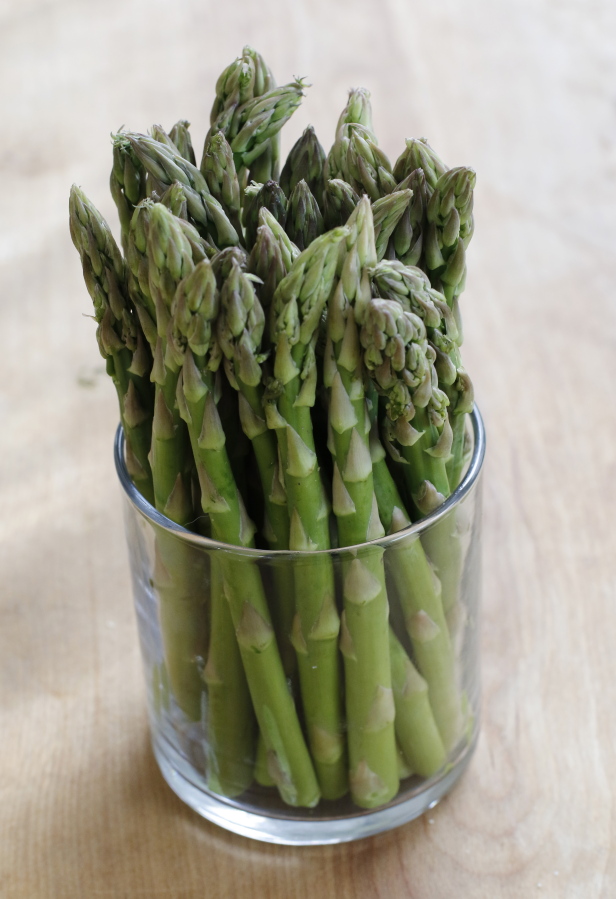The crisp, vibrant stalks of fresh asparagus salute the arrival of fresh produce season and summer.
Though wild asparagus was enjoyed by the Greeks, it was the Romans who began commercial cultivation of the vegetable more than 2,000 years ago. Since then, asparagus has been prized for its unique flavor, texture and health benefits. Introduced to America by the early colonists, Washington is among the top growers of the versatile, flavorful vegetable.
Asparagus stalks have a unique shape and are a member of the lily family, which includes onion, garlic and leeks. A perennial plant, asparagus produces stalks with a daily growth rate of up to 7 inches. Initial harvest occurs in the third season with plants producing for up to 20 years.
There are three major varieties of asparagus:
• Green and white varieties are identical, with the exception that the white is not exposed to sunlight so cannot turn green. White asparagus is particularly popular in Europe and costs as much as double the price of green.
• Purple asparagus is a different variety and known for its sweeter taste and more tender, thicker stalks. This variety typically is eaten raw. If cooked, the purple variety turns to a dark green or bronze color.
A single serving of asparagus (three to four spears) contains 33.5 calories, no cholesterol or fat, B and C vitamins, potassium and iron. According to the National Cancer Institute, asparagus is the food that tests highest for the potent antioxidant glutathione.
Select asparagus with bright, smooth, firm, uniform-sized stalks. The tips should be closed and compact.
For maximum sweetness, eat the asparagus as close to harvest as possible. Sweetness diminishes with time.
Fresh asparagus should be stored in cool, humid conditions. One method is to wrap the spears in a damp tea towel, place in a plastic bag, and store in the refrigerator crisper compartment. A second method is to place the spears upright in a container with a half-inch of water, cover and place in the refrigerator.
When ready to prepare, rinse the asparagus in cool, running water to remove any residual dirt and debris, being careful not to damage the tips. Cut or snap any fibrous, tough ends off the stalk. Asparagus does not require peeling; however, if peeling is desired, use a vegetable peeler.
Fresh asparagus preparations include raw, boiled, steamed, saut?ed, broiled and grilled. Similarly sized spears result in consistent cooking. My favorite method is saut?ed in olive oil with sliced garlic and onions. Though steaming and finishing with drizzled olive oil or butter is a close second.
Whichever cooking method you prefer, cooked fresh asparagus should maintain a crisp — not crunchy — texture when a knife cuts into a stalk. The finished asparagus should not be mushy. Do not add baking soda to the cooking water to preserve the color. The baking soda will make the asparagus mush and appear to be coated with a slightly soapy film.
If not served as whole spears, asparagus is often sliced at an angle for a more attractive appearance.
For enjoyment out of season, fresh asparagus can be pickled as well as frozen, pressure canned or dehydrated. Excluding pickling, these preservation methods result in asparagus having a softer texture and are recommended for use in soups, casseroles, sauces, stuffing and stews.
For additional asparagus recipes and serving suggestions, check out Chef Scotty’s Market Fresh Recipes at ext100.wsu.edu/clark/?p=8163.
Leigh Rosenberger is a WSU Clark County Extension master food preserver. For more information, contact the Master Food Preserver help line at 360-397-6060, ext. 5366, visit ext100.wsu.edu/clark/?p=1134 or search for WSU Home Food Preservers Clark County on Facebook.



